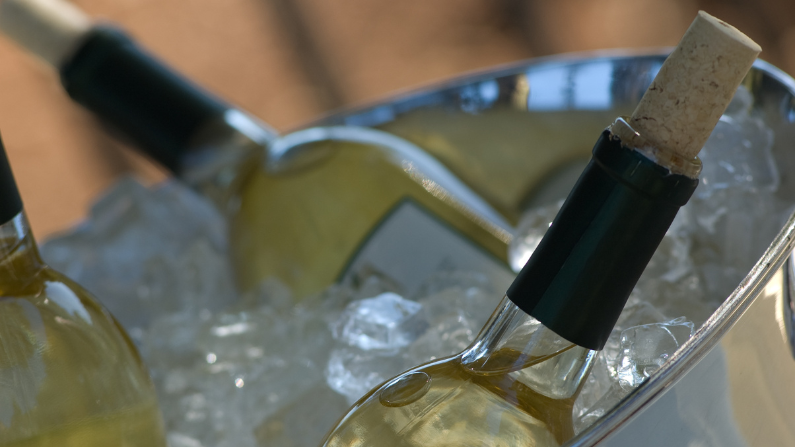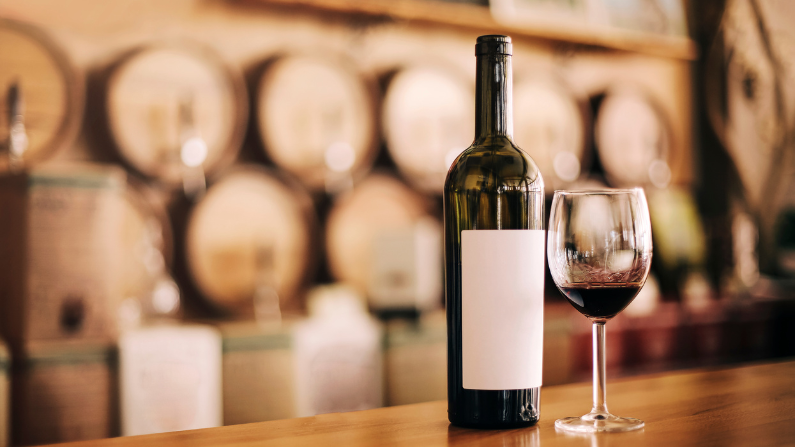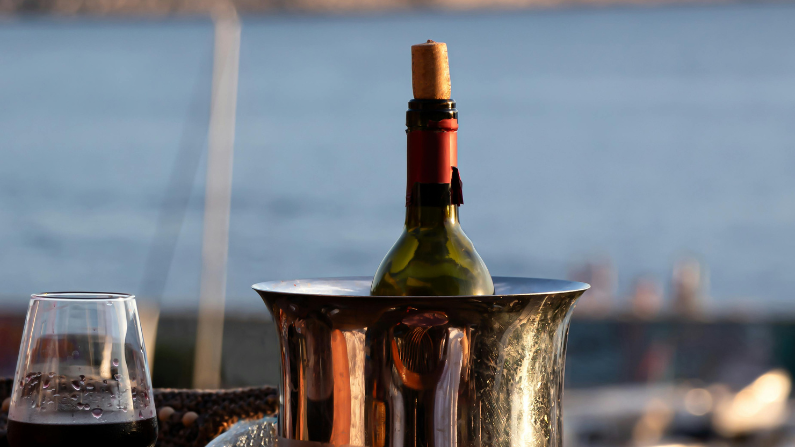
Oxidation: From Flaw to Fabulous
Discover how controlled oxidation can enhance wine complexity, while uncontrolled exposure leads to undesirable flavors like browning and nutty notes.

There is no bigger injustice to wine than drinking it at the wrong temperature. This is not a dramatic statement; it is an accurate one. Wine temperature is the single most underrated factor influencing the enjoyment of wine. It can significantly change the perception of aromatics, alcohol, tannins, sweetness, and acidity in wine, completely altering its balance.
Wine is like any other beverage- beer, lemonade, soda, coffee or tea-that is best enjoyed within a specific temperature range, warm or cold. Lukewarm beer or cold (not iced) black tea are hardly drinkable let alone enjoyable. It is the same for wine. Disregarding the wine’s recommended temperature range is bound to ruin the drinking experience: A perfectly good Cabernet Sauvignon served warmer than it should, can taste over alcoholic and dull, while a premium oaked Chardonnay served overchilled, can taste tart with muted aromas.
So, what are these recommended temperatures and what are the reasons behind them?

The type and style of wine indicate its ideal temperature. Generally, the lighter the body of the wine, the cooler it can be. According to WSET (Wine & Spirit Education Trust), light bodied white and rosé wines are ideally served chilled (7-10°C / 45-50°F). This cool temperature sharpens their refreshing acidity while highlighting their fresh fruits. Such wines are Pinot Grigio, Sauvignon Blanc, Riesling, and Provençale rosé. It does not come as a surprise to chill white and rosé wines, it is even expected, and most drinkers get the temperature right.
The common mistake with white wines though happens with the more full-bodied complex white wines such as oaked Chardonnay (Burgundy, Napa Valley), white Rioja, or oaked Chenin Blanc, to name a few. These wines should be served only lightly chilled (10-13°C / 50-55°F) because very cool temperatures diminish the richness of the wine, reduce the release of its aromas (volatile compounds), and mask its delicate flavors. This will make the wine appear suppressed and muted, losing its complexity and nuances. No wonder it is said that overchilling is a blessing to pass on poor quality wines to consumers.
Sweet white wines are also a special case. It is crucial to serve these wines chilled (6-8°C / 43-46°F). Wines like Sauternes, Tokaji, Eiswein, and ‘Late Harvest’ wines are served well chilled to reduce the perception of sweetness, and emphasize acidity, making the wine seem crispier and more balanced. As they warm up, these wines will taste sickly sweet as the acidity becomes flatter, giving way to a syrupy beverage far from the complex refreshing sweet wine it once was. Think of the increased sweetness perception of a melted ice cream or chocolate.

Red wines are the biggest “victims” of the wrong service temperature. They are most at risk of being drunk too warm under the headline “Serve at Room Temperature.” There is a BIG misconception of what this temperature actually is. The concept of “room temperature”, traditionally originated from the indoor climate of a naturally cool house or cellar in Europe, defined by WSET as between 15-18°C / 59-64°F, not the temperature of most homes, which are much hotter than that. Karen MacNeil, the author of “The Wine Bible” explains it best: “Imagine the temperature of a movie theater in summer, that’s where most red wines need to be.”
Medium and full-bodied red wines, like Bordeaux, Shiraz, Merlot, and Chianti that are served at a temperature higher than 18-20°C/64-68°F, will have more jammy aromas with volatile alcohol, overpowering and outshining the acidity and tannins, throwing the wine off balance and killing its freshness.
On the other hand, serving these wines colder than the recommended temperature will exaggerate their tannins and mute the aromas, taking them to the other side of the unpleasant wine spectrum: bitter, harsh, thin, and lacking any aromas.

So, if red wines are to be served at “room temperature” what is the trend of “chillable” red wines all about? Light-bodied red wines with fresh fruits and low tannins are to be treated differently and can be enjoyed at a cooler temperature, celebrating their freshness and vibrancy. Wines such as Beaujolais, Valpolicella, and lighter styles of Pinot Noir, can be served slightly chilled at 13°C/55°F. Care must be taken though not to drop below this temperature, but in the event of that happening, holding the bowl of the glass to raise the temperature naturally will be the way to go, keeping in mind that sudden exposure to extreme heat can damage the wine.
Wine coolers are ideal to ensure the optimum serving temperature, especially ones with dual temperatures for white and red wines. If that is not available, the ice bucket can be a quick and practical fix as you fill it with ice and water and insert the bottles in for as long or little time to get to the coolness required.
The fridge can also be a valuable tool for short-term storage and for reaching the recommended temperature. As the average temperature of the fridge is between 2°C and 5°C/36-41°F, white wines can be stored in the fridge and then taken out 20-30 minutes before serving, giving the wine enough time to warm up naturally to the recommended “chilled” temperature mentioned above. In the case of a full-bodied white wine, the bottle is removed at an earlier time to reduce its coolness further.
As for red wines, they can be popped into the fridge for 20- 30 minutes before drinking them and then they are expected to reach the “room temperature” recommended. Lighter bodied reds can be kept for longer to achieve cooler temperatures. A word of caution here: Even though the fridge can provide a cool constant temperature, it is not advisable to store wine in it for an extended period of time as the lack of humidity and cold temperature will dry up the cork, keeping it at risk of cracking and getting the wine oxidized.
Serving wine at the right temperature is not being fussy or geeky about wine. It is a necessity to enjoy wine and appreciate it, to drink it at its full potential, the way the winemaker envisioned it. So, what does temperature have to do with the enjoyment of wine? Everything.



Discover how controlled oxidation can enhance wine complexity, while uncontrolled exposure leads to undesirable flavors like browning and nutty notes.

Discover 2023 wine trends including lighter reds, everyday sparkling, alternative packaging, emerging regions, value-driven brands, and a growing focus on inclusivity.

Understand how earth’s hidden textures and minerals whisper in every glass.
No matter your current skill level, we can help you improve – pass that exam, share your wine knowledge with others, guide your buyers, enhance your guests’ experience, and show up with confidence and credibility as a wine professional!
Feeling overwhelmed by everything there is to study in wine?
Struggling to stay consistent with tasting, or make it feel purposeful?
Craving connection with others who get what you’re working toward?
Let’s make studying wine less overwhelming, more consistent, and fully enjoyable!
Enter your email below to join our wine newsletter, where we share expert tips, study tools, tasting insights, and updates to support you on your wine journey!
By submitting, you are consenting to receive marketing emails from The Grape Grind. You can unsubscribe at any time.
Want to get better at tasting wine?